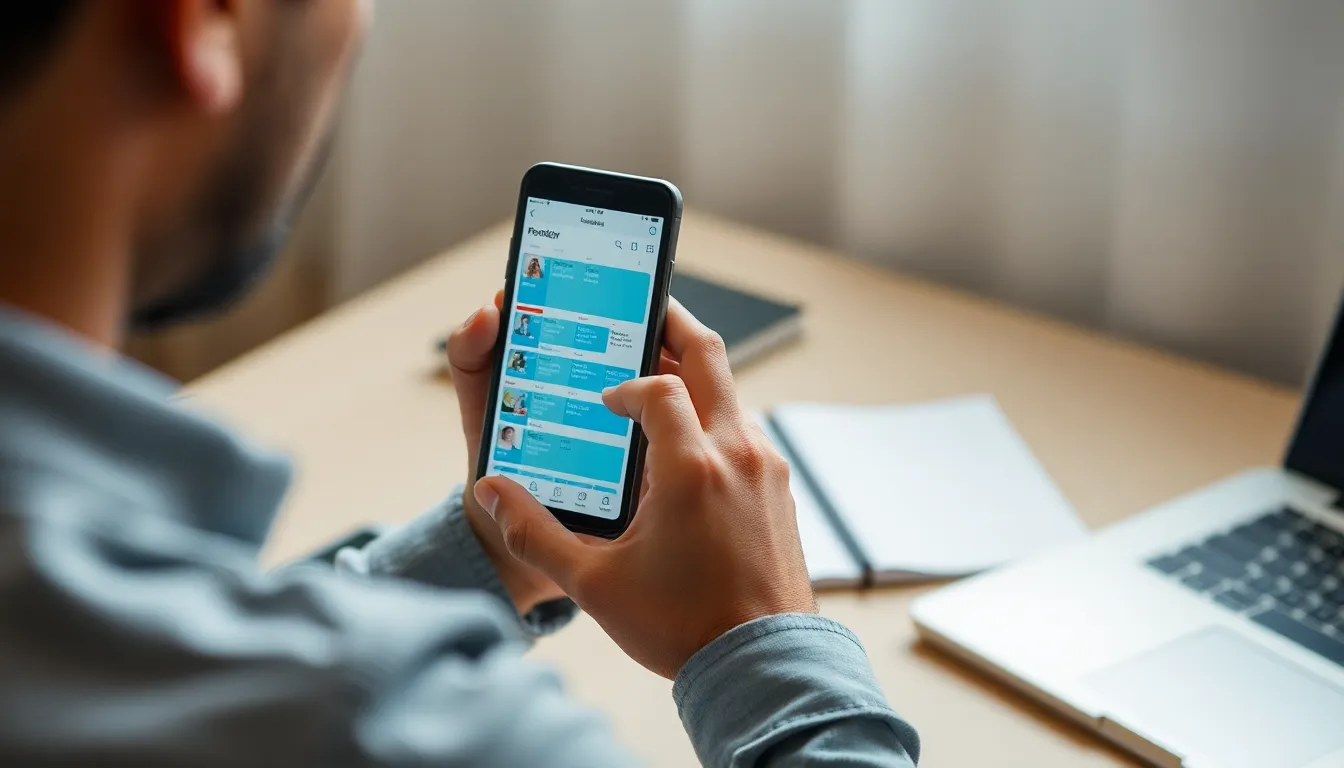Imagine a calendar that doesn’t just keep you organized but also reflects your unique personality. Sounds dreamy, right? Well, customizing your iPhone calendar is not just a possibility; it’s a necessity for anyone who wants to ditch the mundane and embrace a vibrant schedule.
Table of Contents
ToggleOverview of Calendar Customization
Customizing the iPhone calendar enhances organizational efficiency. Users can adjust settings, change views, and select default calendars to suit personal needs. The calendar features options for various color schemes, allowing individuals to match their calendars to their style.
Setting up reminders proves beneficial for keeping track of important events. Calendar customization includes adding custom alerts, ensuring notifications are timely and relevant. They can choose different notification sounds to further personalize their experience.
Sharing calendars with others facilitates better planning among family members or colleagues. Users can easily invite others to view or edit events, streamlining collaborative scheduling. Inclusion of relevant event details helps improve communication across shared calendars.
Many other features support customization efforts. Adding locations to events allows for quick access to maps and directions. Integrating third-party apps expands functionality, enabling use of external tools and services.
Accessibility options cater to diverse user needs. Display settings and font adjustments allow individuals to personalize their calendar’s appearance. This attention to different needs fosters inclusivity, making the calendar accessible to everyone.
Customizing the calendar contributes significantly to user experience. It transforms the iPhone calendar into a tailored tool that aligns with personal preferences and lifestyle. By taking advantage of these options, users can create a more engaging and efficient scheduling process.
Accessing Calendar Settings

Access the Calendar settings to customize how the app functions. This area provides various options to enhance personal scheduling experiences.
General Settings
Adjust general settings to define the behavior of the Calendar app. Users can select default calendars for new events, ensuring every entry goes to the intended calendar. Choose to sync calendars with online platforms like Google or Outlook, enhancing accessibility across devices. Toggle public calendar visibility to share schedules with others while maintaining control over privacy. Set time zone preferences to manage events accurately when traveling, making organization seamless regardless of location.
Display Options
Modify display options to customize calendar views. Select between day, week, month, or year views to suit planning needs. Color-code calendars for instant identification, simplifying event tracking. Enable or disable a week starting on Sunday or Monday, aligning scheduling habits with personal preference. Adjust the font size and style for better readability, ensuring every element in the calendar is easy to navigate.
Customizing Calendar Views
Customizing the calendar views on an iPhone offers flexibility for greater efficiency when planning. Users can switch between day, week, and month views based on their preferences or needs.
Day, Week, and Month Views
Day view displays a detailed breakdown of appointments and events for the selected day. Week view presents a broader scope, providing an overview of the entire week and allowing for easier comparison of schedules. Month view shows all events across the month, helping users spot patterns and plan ahead. Each view can be accessed by tapping on the corresponding icon at the top of the screen. Adjusting the preferred view style enhances personal organization and fosters better time management.
List View Customization
List view serves as a streamlined approach to seeing upcoming events in chronological order. Users can enable this option to quickly scan through pending tasks and appointments. Customization options include sorting events based on their due dates or time, ensuring that the most immediate responsibilities appear first. This section also allows for filtering events by calendar color or specific categories. Adopting list view options aids in maintaining focus on what matters most, enhancing overall productivity.
Adding and Managing Events
Managing events on your iPhone calendar offers flexibility for personal and professional scheduling. Users can create, edit, and remove events with ease, tailoring their calendar for optimal organization.
Creating New Events
To create a new event, open the Calendar app and tap the “+” icon. Users should input event details like title, location, and time. Selecting “Add” allows for customization of alerts and repeat options, ensuring reminders align with preferences. Choosing a specific calendar helps maintain organization, while color-coding distinguishes between different types of events. After completing the entries, tapping “Add” saves the new event, integrating it seamlessly into the calendar.
Editing Existing Events
Editing an event is simple. Users just select the desired event and tap “Edit” in the top right corner. Modifying details such as time, location, or notes can enhance clarity. Changing alert settings remains straightforward; users may decide when to receive notifications. To delete an event, use the “Delete Event” option at the bottom of the edit screen. Keeping events up-to-date ensures the calendar remains a reliable planning tool.
Syncing and Sharing Calendars
Syncing calendars across devices helps maintain consistent access to scheduling information. Users can link their iPhone calendars with services like Google and Outlook for seamless integration. Syncing requires setting up accounts in the Calendar settings, allowing all devices to reflect the latest events. Automatic synchronization ensures any changes made on one device appear on others. For optimal performance, users should check their internet connection to facilitate updates.
Sharing calendars fosters collaboration and enhances event planning among family, friends, or colleagues. Users can share their calendars via the Calendar app, allowing others to view or edit events. To share a calendar, tap on “Calendars,” select the desired calendar, and choose the “Add Person” option. This function promotes better communication, as everyone involved can stay informed about important dates and events. Managing permissions grants control over who can simply view or edit shared calendars, ensuring relevant privacy characteristics are upheld.
Tips for Effective Calendar Usage
Utilize color-coded calendars for quick identification of events. Assign a distinct color to different types of events, like work, personal, or family events. This method helps users visually differentiate commitments at a glance.
Incorporate reminders into event details to ensure important dates aren’t missed. Set alerts ahead of time, such as one day before or one hour prior. Custom alerts promote better time management and preparation.
Consider integrating your iPhone Calendar with third-party apps for enhanced functionality. Using apps like Todoist or Trello can create a seamless workflow, streamlining task management alongside scheduling.
Explore the option to set recurring events for regular activities. Users can establish patterns for events such as weekly meetings or monthly reminders. This feature reduces repetitive entry efforts for frequent tasks.
Sync calendars across devices for consistency. Linking your calendar with Google or Outlook ensures updates made on one device reflect on another. Such synchronization enhances accessibility and organization.
Use the list view feature for a focused timeline of upcoming tasks. This view displays a simple chronological list, providing clarity on what lies ahead. Prioritizing tasks in this format aids productivity.
Share your calendar with family members or colleagues to improve collaboration. Managing permissions allows others to view or edit as needed. Sharing encourages better planning and communication.
Adjust display settings for improved readability. Font size and style options enhance user experience. Tailoring these settings creates a more personalized touch to the calendar interface.
Customizing the iPhone calendar is a powerful way to enhance personal organization and productivity. By tailoring settings views and notifications users can create a scheduling experience that truly fits their lifestyle. The ability to share calendars and integrate third-party apps further enriches collaboration and efficiency.
With just a few adjustments users can transform a basic calendar into a dynamic tool that keeps them on track. Embracing these customization options not only makes planning more enjoyable but also ensures that important events and tasks are managed effectively. The iPhone calendar can become a reflection of one’s unique preferences and needs making it an invaluable resource in daily life.




